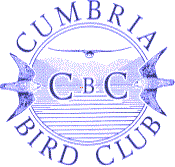Blue skies, wide open spaces, turf, sea and the cry of oystercatcher and curlew. On a crisp winter’s morning it’s difficult to imagine a more delightful area.
The inner Solway, from Silloth eastwards is known for its geese, and the large flocks of waders which roost on Campfield Marsh. Good viewpoints for the waders, which include Oystercatcher, Curlew, Golden and Grey Plover, Lapwing, Knot, Dunlin, Bar-tailed (and sometimes Black-tailed) Godwit, Redshank and Turnstone, can be found from the viewpoint in the village of Bowness on Solway, from the pull-in by the railings east of the village and from several lay-bys on the road from Bowness to Anthorn. To the east of Drumburgh raised banks give views of Barnacle Geese flocks of up to several thousand birds. Whooper Swan can also be found on the marshy land which backs the estuary, while the water itself holds grebes, divers, Pintail, Wigeon, and Shoveler, to name but a few.
Bowness has made its name in recent years for its May skua passage, while Grune Point (NE of Silloth) is a good migration watchpoint for warblers and hirundines.
Hint: Check tide times online or in the local papers. The watching is better around high tide – no surprise there – but it can flood some local roads. Believe the warning notices! And finally, dress up warm in mid-winter – you’ve been warned.
Please note that there is no public right of way on the old viaduct near Bowness, and that the approaches to it are potentially dangerous. We don’t recommend it!
Link: RSPB Campfield Marsh
